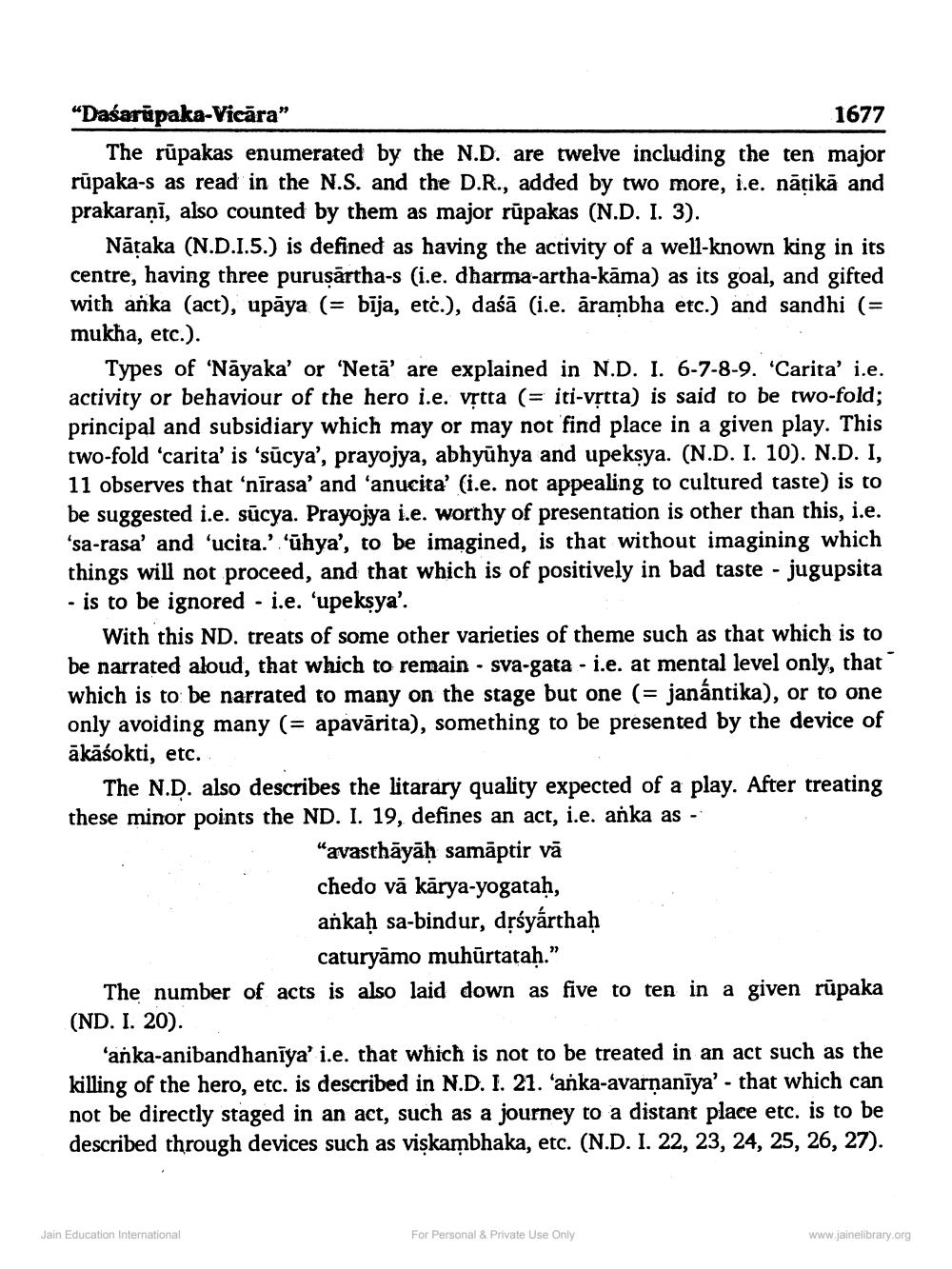________________
"Dasarūpaka-Vicāra”
1677 The rūpakas enumerated by the N.D. are twelve including the ten major rūpaka-s as read in the N.S. and the D.R., added by two more, i.e. nātikā and prakaraṇī, also counted by them as major rūpakas (N.D. I. 3).
Nāțaka (N.D.I.5.) is defined as having the activity of a well-known king in its centre, having three puruṣārtha-s (i.e. dharma-artha-kāma) as its goal, and gifted with anka (act), upāya (= bīja, etc.), daśā (i.e. ārambha etc.) and sandhi (= mukha, etc.).
Types of Nayaka' or Netā' are explained in N.D. I. 6-7-8-9. 'Carita' i.e. activity or behaviour of the hero i.e. vịtta (= iti-vștta) is said to be two-fold; principal and subsidiary which may or may not find place in a given play. This two-fold 'carita' is 'sūcya', prayojya, abhyūhya and upeksya. (N.D. I. 10). N.D. I, 11 observes that 'nīrasa' and 'anucita' (i.e. not appealing to cultured taste) is to be suggested i.e. sūcya. Prayojya i.e. worthy of presentation is other than this, i.e. 'sa-rasa' and 'ucita.' 'ūhya', to be imagined, is that without imagining which things will not proceed, and that which is of positively in bad taste - jugupsita - is to be ignored - i.e. 'upekşya'.
With this ND. treats of some other varieties of theme such as that which is to be narrated aloud, that which to remain - sva-gata - i.e. at mental level only, that which is to be narrated to many on the stage but one (= janāntika), or to one only avoiding many (= apavārita), something to be presented by the device of ākāśokti, etc.
The N.D. also describes the litarary quality expected of a play. After treating these minor points the ND. I. 19, defines an act, i.e. anka as -
"avasthāyāḥ samāptir vā chedo vā kārya-yogatah, ankaḥ sa-bindur, dịśyárthaḥ
caturyāmo muhurtataḥ.” The number of acts is also laid down as five to ten in a given rūpaka (ND. I. 20).
‘anka-anibandhanīya' i.e. that which is not to be treated in an act such as the killing of the hero, etc. is described in N.D. I. 21. ‘anka-avarṇanīya' - that which can not be directly staged in an act, such as a journey to a distant place etc. is to be described through devices such as viskambhaka, etc. (N.D. I. 22, 23, 24, 25, 26, 27).
Jain Education International
For Personal & Private Use Only
www.jainelibrary.org




